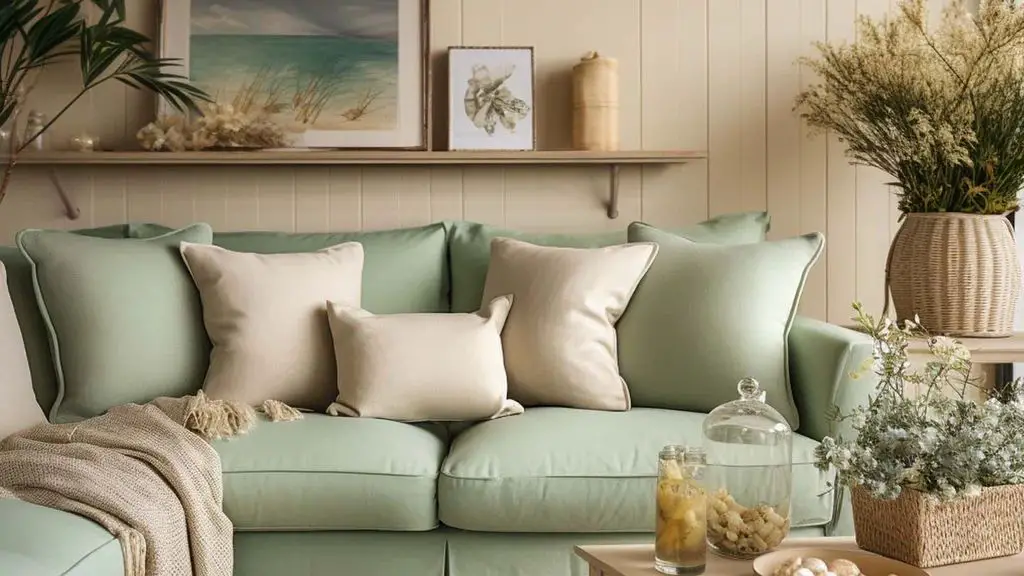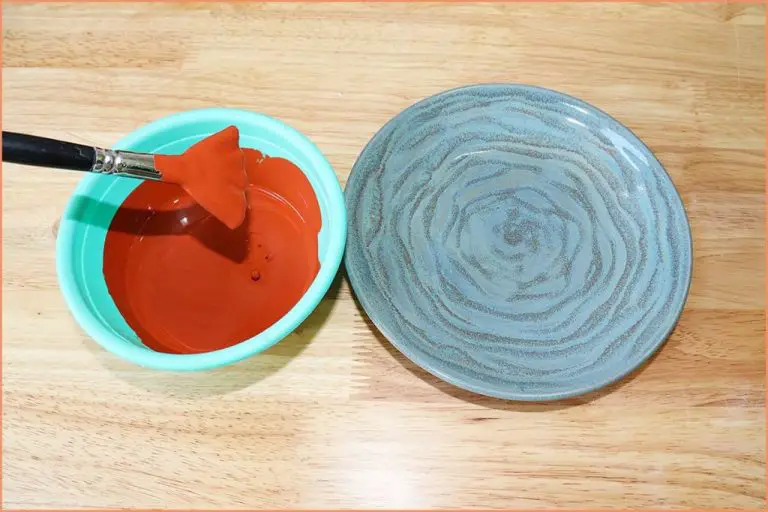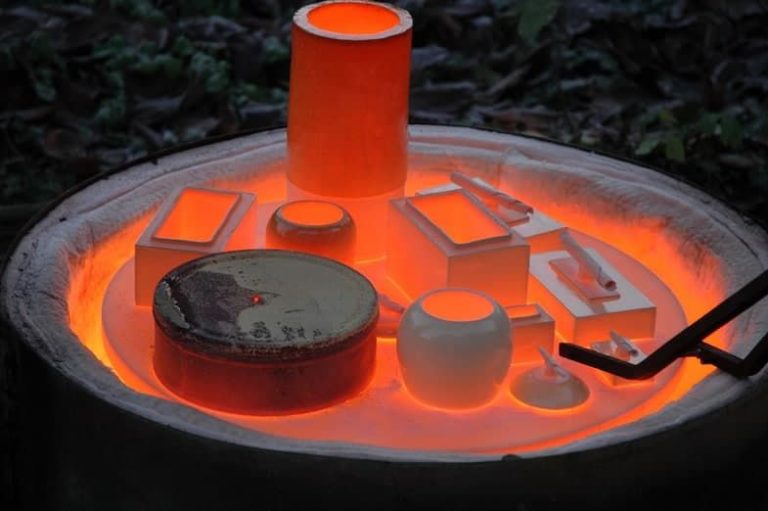What Color Is Similar To Celadon?
Celadon is an elegant shade of light green with bluish undertones. The color takes its name from the light green glaze used on ancient Chinese porcelain. Celadon glazes were first developed during the Han Dynasty in China and were immensely popular for their beautiful, jade-like color.
Celadon ceramic wares were produced mainly during the Song and Yuan Dynasties in ancient China from the 10th to 14th centuries. The glaze ingredients and production techniques were kept a closely guarded secret among Chinese potters. Celadon porcelain was highly prized and was a major export from China during this period, traded extensively through the Silk Road and maritime routes.
Today, celadon refers to any porcelain or ceramic ware glazed with a light green glaze resembling ancient Chinese celadon. The soft, soothing hue also describes the pale green color itself. Celadon is now a popular color in home décor, fashion, and design.
Defining the Color Celadon
Celadon is a pale, cool green color named after the glaze used on Chinese celadon ceramics. The celadon color is defined by specific technical color specifications:
The hex code for celadon is #ACE1AF (Source). Hex codes are six-digit codes that represent the red, green, and blue (RGB) values that make up a specific color.
The RGB values for celadon are: R: 172, G: 225, B: 175 (Source). In the RGB color model, colors are represented by combining amounts of red, green, and blue light. The RGB values define the hue and intensity of celadon.
The CMYK values for celadon are: C: 24%, M: 0%, Y: 22%, K: 12% (Source). In the CMYK color model, colors are represented as percentages of cyan, magenta, yellow, and black ink. The CMYK values define how celadon is reproduced in print.
Similar Shades of Green
Celadon has a light, muted green hue that is often described as grayish, bluish, or olive green. Here are some similar shades of green that are comparable to celadon:
Chartreuse is a vivid yellow-green that provides a brighter, more saturated alternative to celadon. While both have green undertones, chartreuse pops more while celadon is more subdued.
Jade is a medium green with blue undertones, like celadon, but is darker and deeper. Jade has a cool, emerald tone that distinguishes it from the more grayish celadon.
Malachite is a vibrant green stone with blue and black veining. While malachite has celadon’s blue-green coloration, it is much more vivid and pronounced.
Mint is a pale, cool green with more yellow undertones than celadon, giving it a brighter, crisper appearance. However, mint is still fairly soft and muted like celadon.
Seafoam describes a pale, grayish green with hints of blue that directly parallels celadon. However, seafoam tends to have slightly more blue tones while celadon leans greener.
Overall, shades like jade, malachite, and chartreuse provide much deeper, jewel-toned greens compared to the more subtle, grayish celadon. Softer hues like mint and seafoam come closer to celadon’s muted palette.
Colors with Similar Tones
Some colors with similar cool undertones to celadon include various shades of grey, blue, and taupe. Here are a few specific options:
Soft cool greys like Light French Grey, Silver Chalice, and Cadet Grey have a muted quality reminiscent of celadon.
Light sky blues like Celeste and Alice Blue have a similar pastel blue-green tone.
Hazy cool-toned taupes like Mist Grey and Taupe Grey also complement celadon nicely.
Overall, greys, blues and taupes in the same muted, subtle palette as celadon make for pleasing pairings with similar cool undertones.
Complementary Colors
Complementary colors are those located directly across from each other on the color wheel. For celadon green, vibrant warm shades like reds, oranges, pinks, purples and browns make great complements.
On the RYB (red, yellow, blue) color wheel, the complement of celadon is a vivid reddish-orange. According to Color Theory, from https://www.canva.com/colors/color-meanings/celadon/ such colors create high contrast and vibrancy when paired.
Other analogous warm shades like coral, salmon, rust, cinnamon, clay and peach also complement celadon beautifully. Combining the cool celadon with these warmer shades creates color harmony and visual interest.
Rich burgundies, plums and wines are further complementary options. Soft dusty pinks, mauves and lilacs pair gorgeously as well. Even warm, earthy browns and deep chocolates work nicely to contrast the cooler celadon.
No matter which complement you choose, pairing celadon with a bold, saturated warm color is sure to make both stand out. The temperature contrast creates liveliness, energy and balance.

Celadon in Nature
The soft, muted hue of celadon green can be found in many natural elements. Here are some examples of where celadon appears in plants, minerals, and animals:
Plants: Celadon is seen in the subtle green shades of certain succulents like elephant bush and panda plant. Moss and lichens on tree trunks and rocks also exhibit celadon tones.
Minerals: The mineral jadeite, known for its pale green color, is a type of jade that displays the classic celadon green shade. Certain agates and Chrysoprase stones also contain swirls of celadon.
Animals: The underside of a snail’s shell often shows a celadon green color. Some species of frogs and lizards have celadon shades on parts of their skin as well. Even bird eggs like those from a Fast Loris contain speckled celadon spots.
Celadon in Decor
The soft, pale green hue of celadon has become increasingly popular for decorating and design. Celadon pairs beautifully with neutral colors like white, beige, and gray, adding a subtle pop of color without being overwhelming. According to Pinterest, celadon green interiors is a growing trend for 2023, with people loving how it looks in living rooms, bedrooms, and bathrooms.
Celadon works well in home decor such as pillows, throws blankets, wall paint, and accessories. It has an uplifting yet calming effect that is perfect for creating a tranquil vibe. Celadon also looks elegant when used in clothing, graphic design, packaging, and branding. The muted tone allows other colors to pop while still providing a soothing backdrop.
When using celadon in home decor, pair it with light wood tones, black accents, and plenty of whitespace for a relaxed Scandinavian style. Or complement it with rich blues and greens for an organic, earthy feel. Celadon can be used sparingly as an accent, or go bold with celadon-painted walls or furniture. Just be sure to counterbalance it with neutrals so it doesn’t become overwhelming.
No matter how it’s used, celadon offers a versatile pop of color and brings a sense of tranquility wherever it goes. It works in traditional and modern spaces alike, always evoking a feeling of harmony and sophistication.
Celadon in Culture
Celadon has long held cultural significance, particularly in East Asia. The color is strongly associated with Chinese, Korean and Japanese ceramics dating back to ancient times.
In China, celadon glazes were developed as early as the Eastern Han period between 25-220 AD. The ceramics produced during the Song dynasty (960–1279 AD) and Ming dynasty (1368–1644 AD) are especially renowned for their celadon glazes which exhibit a range of light greenish-blue hues. Celadon came to symbolize refinement and spirituality in Chinese culture.
In Korea, celadon techniques were perfected during the Goryeo period (918–1392) producing the prized Korean celadon ware. The light green color was treasured for resembling jade while the crackled glaze was said to resemble dragon scales. Korean celadon held deep cultural meaning and was believed to promote tranquility.
In Japan, celadon was introduced from China and Korea and evolved into a unique Japanese style during the Tokugawa period (1603-1867). Japanese celadon often features painted decoration and subtle color variations. The serene color makes it fitting for the Japanese tea ceremony.
Across East Asia, celadon came to symbolize beauty, spirituality and refinement thanks to its soft, soothing hue. The difficulty in achieving the perfect celadon glaze added to its cultural mystique and prestige.
[https://encyclopedia.princeton.edu/pages/10414/Celadon.html]
Celadon Alternatives
Celadon is a pale, grayish green color that is quite unique. However, there are some other pale green shades that can make suitable alternatives depending on the context.
Some other pale green options to consider include:
- Seafoam Green – This has a bit more vibrancy than celadon with a bluish-green hue. It has high luminosity which makes it pop. However, it may be too bright for some applications where celadon is preferred for its more muted look. (https://www.picmonkey.com/colors/green/celadon)
- Sage Green – Also a pale green but with more yellow undertones than celadon. It is a natural looking color, though not quite as soft and subtle as celadon. (https://coloretica.com/color-match-tool/true-value/true-value-match-to-natural-color-system/alternatives-to-celadon-green)
- Mint Green – Crisp and cool, mint green is lighter and brighter than celadon. It works well to provide a fresh, spring-like look. However, it lacks the sophisticated subtlety of celadon.
The choice between celadon and similar pale greens really depends on the specific needs and ambiance you are looking to achieve. Celadon will create a very mellow, calming effect with its grayish undertone. The other options add a bit more vibrancy or different moods. Consider the purpose and select the shade that best fits your vision.
Conclusion
In summary, celadon is a pale, grayish shade of green that has been cherished for centuries. It gets its name from the distinctive glazed Chinese ceramics in this hue. Similar colors like seafoam green, aqua, teal, and sage share celadon’s soothing, cool undertones. While vibrant greens like emerald or lime have very different personalities. When decorating with celadon, opt for a tranquil, relaxed aesthetic. Pair it with neutrals like cream and gray for a calming oasis. Or use it as an unexpected pop of color against warm browns and tans. Whatever your style, celadon is a versatile, nostalgic shade that evokes ceramics found on ancient trade routes. Its longevity speaks to the enduring appeal of this expressive yet modest color.
In closing, celadon offers a one-of-a-kind color experience. Its connections to nature, history and craft make it special. While no single color can perfectly match celadon, exploring similar cool greens and complements gives plenty of options. Whether you seek an accent wall, throw pillow or entire room drenched in celadon, this tranquil hue welcomes those pursuing peace and tranquility.



